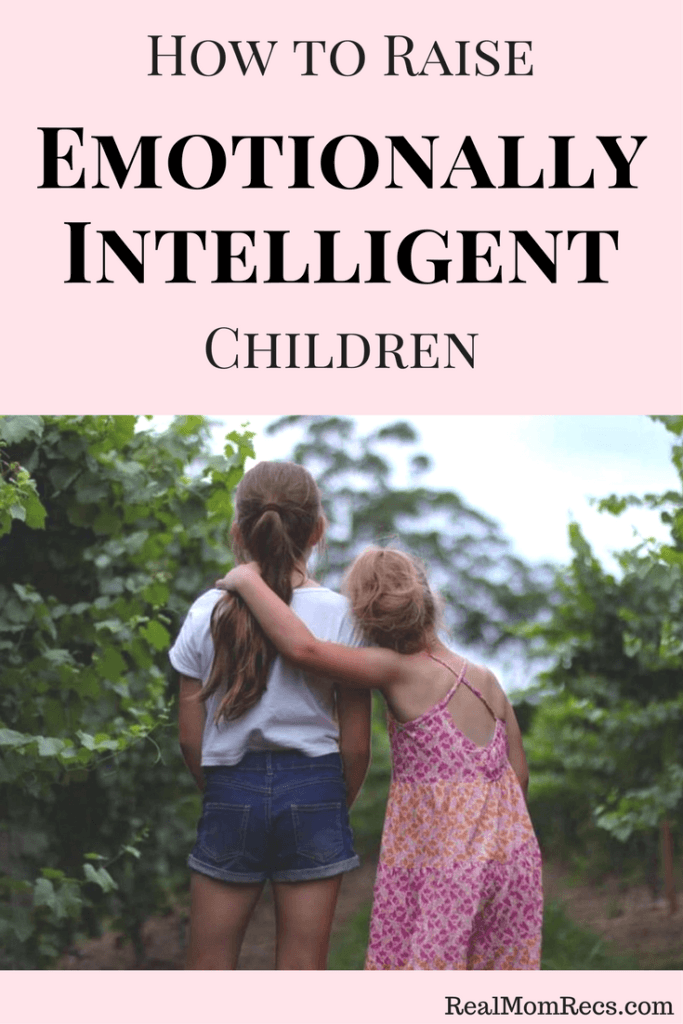This is part 2 in a 3 part series about teaching Emotional Intelligence to children. Part one focuses on teaching children the vocabulary to name their feelings, as well as recognize the corresponding facial expressions.
Part 2 is about teaching kids to express feelings in a healthy way.
Disclaimer: This post may contain affiliate links, which means if you order something after clicking my link I may receive a small commission at no extra cost to you.
Unhealthy ways kids typically express feelings
The ultimate goal is that children will express their feelings appropriately with words. Developmentally, young children have two deficits that make it more difficult for them to do this. First, they lack the language skills to express themselves. Their language skills are more rudimentary than adults and they vocabulary to describe their feelings is still new to them. Secondly, they lack self-control. This means their responses are impulsive and tend to be physical, knee-jerk reactions like hitting, screaming, biting, or tantrums.
As our children grow, their language skills and self-control develop and these problem behaviors begin to fade. In the meantime, we teach our children to pause before responding and to use their words in an effort to have them expressing themselves appropriately over time.
All feelings are ok
It’s important to remember never to judge your child’s feelings. It will not help them develop healthy coping skills if you act like only positive emotions are acceptable to you. Even “ugly” feelings like jealousy, sadness, and anger are normal and OK.
(Think of how many adults you know who need to learn how to feel these negative feelings after years of being taught to bury or hide them!)
Without passing judgement, allow your child to feel their feelings. The goal is not to deny the child their negative feelings, but teach them appropriate responses to these feelings.
Separate feelings from behavior
Even if their behavior is not acceptable, their feelings are.
While all feelings are ok, the behaviors that come out as a result of these feelings are not always ok. For example, a child who hits in response to anger when another child has taken their toy is having an unacceptable behavior in response to an acceptable feeling. The important distinction for parents to make is that while all feelings are OK, there are acceptable and unacceptable ways to express these feelings.
Make the distinction clear to your child by telling them “it is OK to feel angry when someone has taken something from you. But we never use our hands for hurting.” Give them an alternative behavior to replace the problem behavior. “Next time you feel angry, try using your words. Talk about it, and make a plan for how you will take turns. Go to a grown up if you need help using your words.”
Do not withhold love due to behavior
After children act out, they typically have feelings of shame. The parents’ job is to teach them how to behave without shaming them. Shaming a child for their bad behavior can cause them to believe they are inherently bad and even worse, unlovable.
When my kids calm down after misbehaving, I make sure to give them a hug and let them know I still love them. They know I don’t always love their actions, but I will always love them.
Validate, validate, validate
The golden rule of teaching your children healthy ways to express emotions is first to always validate their feelings.
It can be challenging for parents to take the step of validating their child’s feelings when their child is misbehaving. Most parents will skip this step and immediately reprimand the behavior and punish the child. Take the time to consider how this plays out for a small child.
- Suzie took my toy without asking when I was playing with it.
- I got mad, so I hit her.
- Mom got so mad, she yelled and put me on this stair.
- Now I’m mad at Suzie and I’m mad at Mom.
The child might do their time out and return to playing, but nothing has been learned to prevent this from happening again. The child has not built any skills to express themselves in a better way. Additionally, the relationship between parent and child has been weakened.
When your child feels understood and validated by you, they feel closer to you. They will respond better to what you’re trying to teach them when they feel you understand them.
Practice healthy ways to express feelings
Work on these skills with your child to learn how to manage and express their feelings:
- Deep breathing: Taking deep breaths slows down the body’s response to adrenaline and assists in returning to a calm state. Practice with your child when they are not escalated. Tell them to practice taking a deep breath and blow out while counting to 5. You can have them imagine they are blowing up a balloon or blowing out birthday candles. The trick is to make sure they are doing long, slow breaths and not 5 short quick ones.
- Drawing your feelings: When children are having trouble expressing their feelings with words, you can give them blank paper and a box of crayons or markers and tell them to draw their feelings. I’ve seen children take this literally and draw a picture of a sad child with big tears going down the paper, and I’ve seen children go with a more symbolic route and emphatically fill the paper with red or black markings to indicate anger. Either way, the act of coloring is a release of these feelings. An extra benefit is that when they are done coloring, they tend to explain the drawing by describing what made them feel that way.
- Physical release: My children often choose to express themselves with physical movement. Sometimes they will request a certain song (or type of song) and express their feelings through dance. Other times they just need the physical release of some active toys and we have our basement playroom set up to allow this. With aggressive children who have a tendency to lash out and hit others, a step down approach might involve giving them a pillow or stuffed animal to punch in place of hitting another person.
Problem solving
You always want to listen to your child and validate their feelings, but you don’t want to solve their problems for them. Instead, guide them through with questions that will help them solve their own problems. Help them brainstorm some possible courses of action and ask them what the consequence of each one would be. The goal is to become your child’s inner voice. Eventually he or she will be able to pause before reacting to their feelings, and come up with a good solution on their own.
Books to help your child manage their feelings
These are books I absolutely love and used almost daily in my work as a child therapist:
Children who are prone to angry outbursts will be nodding their heads while you read this book. When the boy is told no, he feels his anger rise up and grow until he turns into an angry dragon. As the angry dragon, nothing is safe, “not even Mom and Dad”. It perfectly illustrates how out of control and scary it feels to be so angry. Eventually the dragon’s anger turn to sadness and his tears melt the angry feelings away. He turns into a boy again and his Mom and Dad are there to comfort him.
One of our favorite authors, Molly Bang, tells the story of young Sohpie, who gets in a fight over a toy with her sister. She feels her anger well up inside until she explodes and runs outside into the wide, wide world. Eventually she finds a tree to climb and looks out into nature and feels peaceful. After a little while, she cries. She feels herself calm and returns home to her family. The author shows a keen understanding of how children feel their emotions and many young children will relate to this book.
A great resource for kids with anxiety or who just tend to be more worrisome. It talks about what worries are and how they make you feel. Most importantly, it teaches basic coping skills for kids to manage their worries, such as relaxation, physical activity, and positive self-talk.
What has been the greatest challenge for you in teaching your kids how to manage their emotions? What topics would you like learn more about?
Share in the comments! I would love to write more posts that are useful to my readers.






